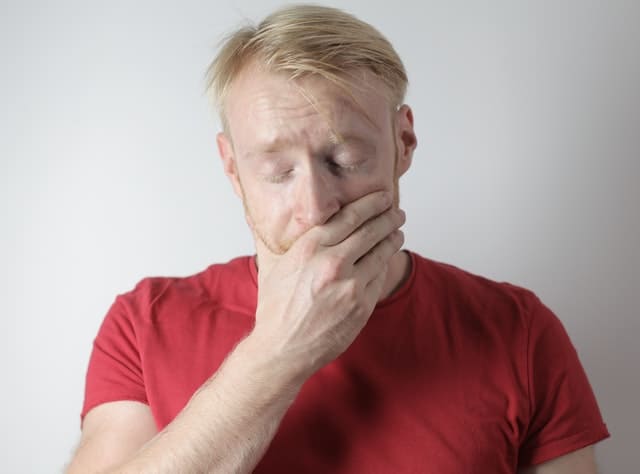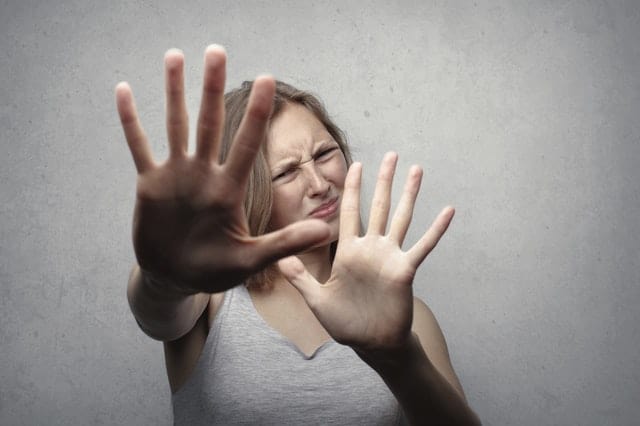Let’s cut to the chase… What really scares you? What frightens you beyond belief, and leaves your heart pounding, your pulse racing, and the world around you spinning?Putting your hand in a bag of wriggling, possibly venomous snakes? Or standing on the edge of a tall building, and looking down at the streets below, where everything is so tiny, so minuscule it’s like you are looking at a page from a city A-Z? Or is it still the dark, like when you were a child, left alone with the pitch-black where nothing is discernible, and sounds are strangely magnified, like creaking hinges, or soft, unseen footsteps approaching you, or is it the slow realization that the savage monster from your worst nightmares is lying quietly in wait, right under your bed?
“Bran thought about it. ‘Can a man still be brave if he’s afraid?’ That is the only time a man can be brave,’ his father told him.” – George R.R. Martin, U.S. screenwriter and author of “A Game of Thrones”
Fear is a powerful and emotional human response to danger. It’s borne out of the instinct to survive, and it asks us a question – to fight or to flight? To face the fear or to run from it? Now, even in our modern, digitally-driven, twenty-first-century world, we are still being asked that basic question – face the fear or run?
F*** Everything And Run
The word “fear” lends itself nicely to many possible acronyms, being just 4 simple letters – F-e-a-r. In the world of AA meetings, they talk of how fear can affect both recovering alcoholics and active alcoholics very differently like this – either Face Everything And Recover, or F*** Everything And Run.Psychologists do it too, with their professional appraisal of F.E.A.R. = False Evidence Appearing Real, or the alternative F.E.A.R. = False Emotions Appearing Real.Here’s another, taken both from a number of book titles, and a Billboard-topping track from Papa Roach, the U.S. rock band: F.E.A.R. = Face Everything And RiseHowever, cleverly putting words to letters for the promise of an inspirational acronym doesn’t really help the person with their nervous hand in the bag of snakes, or the one standing on that tall building, afraid they will fall, and it certainly has never been used to calm a frightened child at bedtime, who’s convinced there really is a savage monster under their bed.Fear, if it is experienced often, can induce feelings of anxiety, and even anxiety disorders, where these insuppressible feelings of anxiousness and worry become a constant state of mind for those affected. Furthermore, a particular fear can actually lead to a phobia – the extreme or irrational fear of one particular danger.In truth, acronyms aren’t going to help you. However, understanding what causes fear, understanding what causes anxiety, and how exactly both states, though distinctly separate, are often unavoidably interlinked – these things will help you.This article won’t give you another acronym, but it will give you the necessary understanding – to know and accept both fear and anxiety, how best to deal with them, and to go on to lead a more enriching life, without constantly feeling the need to look over your shoulder.
The Difference Between Fear & Anxiety
Primarily, fear is a natural response to a known or comprehensible threat and usually happens very quickly when the realization of a dangerous situation becomes apparent. However, anxiety is a natural response to an unknown or poorly defined threat that is not immediate but is expected to happen at some point in the near future. Both responses – fear and anxiety – produce similar psychological, emotional, and physical reactions, and can even occur simultaneously. However, experts believe that is where any similarities end.Physical symptoms, such as an increased heart rate, muscle tension, feeling breathless and a rush of adrenalin, are characteristic of the physiological response to danger. This initial reaction is gearing our bodies up to either fight or flight – our inbuilt survival stress response. Without this, our minds wouldn’t be alert to the danger, and physically we would be unprepared, whether we chose to stay and fight or to run away.
What Is Fear?
Fear is how we respond to an immediate threat, known or defined. Imagine you’re robbed at gun-point on a dark, lonely street, by a complete stranger. When the gun is aimed right at you, your response will be to either fight or flight – your survival instinct. In all likelihood, you’ll reason that the best outcome for you would be to hand over your money, phone, and other valuables, enabling your flight – to get away without getting shot.Any threat that induces fear is because of our current perception of the physical, emotional, or psychological harm that will come to us. The vast majority of us rationally and instinctively base our fears on this harm. However, given certain circumstances, we can become scared and fearful of almost anything. An irrational fear is of something is called a phobia.
How Fear Exposure Can Lead to Anxiety
Exposure to this fear response can damage the formation of long-term memories and even cause damage to certain parts of the brain, such as the hippocampus – responsible for our learning and memories. Because of this damage, we can become more prone to experiencing the fear response, failing to be able to regulate normally, and this can lead to a state of anxiety.Those people who constantly perceive immediate threats can end up living in a world of fear because their brain and its memories confirm these apparent constant dangers to them.
What Is Anxiety?
Anxiety is a normal, even healthy emotion. It has been clinically defined as “a diffuse, unpleasant, vague sense of apprehension” by eminent psychologists, and by standard dictionaries as “a state of being uneasy, apprehensive, or worried.”However, if a person regularly feels disproportionate levels of anxiety, it can become a medical disorder, leading to “excessive nervousness, fear, apprehension, and worry.” Such disorders will alter how a person’s behavior and emotions, even leading to uncomfortable physical symptoms. In the U.S., anxiety forms the most common group of mental illnesses in the country, with nearly 1 in 5 adults (40 million adults) experiencing it right now. However, it is a sad reality that only 36.9% of people with an anxiety disorder actually receive treatment.Anxiety is not fear, though it can result in similar symptoms. Fear is derived from a known, immediate threat – anxiety is not. Anxiety comes from our mind’s interpretation of the possible dangers that could immediately arise.
Physical Symptoms of Anxiety
Anxiety is much more than being worried about what is on your mind, as it can lead to a number of diverse physical symptoms, both uncomfortable to live with and resulting in obstacles in your daily life. These can include:
- Muscle pain and tension
- Chest pain
- Accelerated heart rate
- Shortness of breath
- Upset stomach and/or nausea
- Excessive sweating
- Shaking and trembling
- Headaches
- Sleep disturbances
Common Anxiety Disorders
If a state of anxiety is left unattended to, it can result in the development of a medically-recognized mental health disorder, which is out of proportion to the original instigating stressor or catalyst. Described as “having recurring intrusive thoughts or concerns,” anxiety disorders can seriously disrupt your daily function.The most common anxiety disorders are classified by the Diagnostic and Statistical Manual of Mental Health Disorders: 5th. Ed. (DSM-V) as follows:
- Generalized anxiety disorder (GAD): A chronic disorder involving long-lasting anxiety and worries about nonspecific life events, objects, and situations – hence, generalized. Easily the most common anxiety disorder, GAD sufferers are not always able to identify the exact cause of their anxiety.
Symptoms of GAD often include:
- Restlessness – a feeling of being “on-edge”
- Uncontrollable worry
- Increased irritability
- Concentration difficulties
- Sleep difficulties, such as falling or staying asleep
- Panic disorder: Sudden attacks of intense terror and apprehension, and usually brief in nature. Such attacks can lead to:
- Shaking
- Confusion
- Dizziness
- Nausea, and
- Shortness of breath, even hyperventilation
- Social anxiety disorder (social phobia): A fear of negative judgment from others in social situations. The disorder includes feelings such as “stage fright,” a fear of intimacy, and anxiety related to either rejection or humiliation, making people avoid public situations, thus ensuring everyday living is extremely difficult.
Overcoming Fear & Anxiety
The feelings of fear and anxiety are just that – feelings, and so normally pass after a short time. However, sometimes they last much longer, and that’s when they become a “state” – a sense of the feeling not stopping, and endlessly continuing. If left untreated or otherwise undealt with, they can take over your life as you know it, affecting your ability to eat, sleep, work, and enjoy life as you used to.Many choose to avoid situations where the accompanying physiological symptoms are worst – social settings, the workplace, and other public places. However, part of the way to resolve such feelings is to face up to them, and avoid the issue of avoidance.
Lifestyle Techniques for Controlling Fear & Anxiety
Obviously, these lifestyle techniques are for those who have not been diagnosed by a physician that they have an anxiety disorder. Hopefully, they will help those before any problem worsens to that extent. If you think you may be suffering from an anxiety disorder, please consult your physician.#1. Facing Your FearsIf you always choose avoidance, you may stop doing things you want or need to do. Exposing yourself to your fears in a safe way can be an effective method of reducing both your fear and your levels of anxiety. A simplified example of this is to have a friend accompany you in certain situations that make you anxious.#2. Know Your FearsLearn more about your fear or anxiety. Keeping a journal of when you experience these feelings can be helpful – write down when it happens and what happens. By learning the reasons behind the fears, you will be better placed to address them.#3. Exercise & NutritionIncrease your level of exercise. Exercise requires a certain level of concentration and will keep you healthy mentally and physically. Additionally, always try to eat a balanced diet, as it will lead to a more balanced mind. Avoid too much sugar, as drops in blood sugar levels, can make you feel anxious.#4. Learn to RelaxLearning how to relax properly can help you with the mental and physical feelings of fear. Try learning relaxation techniques or activities, like yoga, meditation/mindfulness, tai chi, and massage.#5. Avoid Alcohol & DrugsIt’s common for people to drink – for “Dutch courage” – or to smoke a joint when they feel nervous. However, the after-effects of alcohol and persistent marijuana use can make you feel even more afraid or anxious.
Medication for Fear & Anxiety
Anti-anxiety medications are used to provide short-term help, and in no way look at the roots of the anxiety problems. Medications have physical effects on the brain and the body, helping to reduce the symptoms of anxiety, and must be prescribed by a physician or psychiatrist, along with other treatments, eg. CBT.Anti-anxiety medications include:
- Benzodiazepines, eg. Valium (diazepam), Klonopin (clonazepam) and Xanax (alprazolam)
- Beta-blockers
- BuSpar (buspirone)
- Selective Serotonin Reuptake Inhibitors, eg. Prozac (fluoxetine) and Zoloft (sertraline)
- Serotonin-Norepinephrine Reuptake Inhibitors (SNRIs)
- Tricyclic Antidepressants
Ashwood Recovery’s “Promise” Mental Health Program
Based in Boise, Idaho, Ashwood Recovery’s Promise is a highly structured and personalized outpatient program for people whose primary diagnosis is mental health-related, eg. an anxiety disorder. Designed specifically for clients who need to continue the stabilization process after leaving an inpatient care (detox) program, Promise is run as a Partial Hospitalization Program (PHP), offering professional clinical treatment to those with acute psychotic and severe mental health issues.
The treatment includes mental health education, trauma work, experiential activities and therapies such as art and music.
We are not only a bricks-and-mortar mental health facility in Boise, ID.
We provide our services online!





